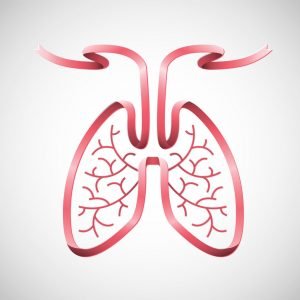
Introduction
The human body has its own built in healing system; we are designed to heal. When you cut or bruise yourself the body heals the wound or area. When you get a cold or virus the body mobilizes the immune system to heal the body. We may take pharmaceutical medicines for our cold or flu, but these only treat the symptoms, in general. Ultimately it is our body that does the work though the innate healing system.
Our bodies have their own internal medicine manufacturing systems – internal ‘pharmacy’. Different chemicals are produced to deal with things like inflammation, healing agents are generated to heal wounds, and opiates type chemicals to mediate pain, and many more.
We develop disease when our bodies healing mechanisms fail or begin to breakdown. The reasons for this happening are many and varied. There is a mounting body of science indicating that STRESS is a huge factor in the down regulation these mechanism. In fact, to heal all conditions of the body, whether physical, mental or emotional we need to reduce all stressors. The body needs homeostasis for optimal functioning, and reducing our stress load is essential.

Qigong is well known for reducing stress, promoting healing and health. It has been practiced for thousands of years in China for these very reasons. It was developed as part of the traditional Chinese medicine system. Qigong promotes the naturally occurring self-healing ability of the body.
We have all heard of the placebo effect. This is when a sugar pill is given but the patient believes it is a medication that will ‘fix’ their illness, and their symptoms resolve. It is well understood that when double blind scientific studies are done that a certain percentage of the placebo group will always get better because they think they have received the actual drug. I mention this because it shows that with the right ‘trigger’ the body will activate its own internal pharmacy and heal. The healer within is activated.
Chronic disease
In the years 2017–18, just over 47 per cent of Australians had one or more chronic conditions. This is an increase of five per cent from the 2007–08 figures of just over 42 per cent. Chronic disease accounts for 37 per cent of hospitalizations and is putting an enormous strain of the health system. A report from the Grattan Institute put the cost of preventable hospital admissions due to “ineffective management” of chronic disease at $320 million a year.
Analysis of the 2007–08 Australian National Health Survey indicates that one-third of the population (35%, or 7 million people)reported having at least 1 of the following chronic conditions: asthma, type 2 diabetes, coronary heart disease, cerebrovascular disease (largely stroke), arthritis, osteoporosis, COPD, depression or high blood
pressure. Cardiovascular disease is the number one killer world wide. Its a very scary and expensive picture.
Now of course, to address this issue we need to look at lifestyle choice: nutrition, exercise, rest, relationships, finances, work, spiritual practice, play, hydration and so on. All these things need to be adjusted or corrected if you suffer from one our more chronic diseases. I would strongly encourage you to address these issues if you haven’t. The things we put in our bodies, like food, alcohol, recreational drugs, and chemicals will affect our innate ability to heal. This takes us into the area of holistic health coaching which is not the topic of today’s Blog.
With that said, lets get back to activating our innate ability to heal through Qigong. Qigong is a combination of mental focus, regulated breathing and gentle movement. These reduce your stress load; calm the mind and nervous system, stimulate lymphatic flow, mobilize joints and muscles, and increase flexibility. The ancient Chinese and the yogis of India worked all this out millennia ago, and through regular practice realized health and vitality.
Breathing
Our breathing mechanism is critical to good health. High stress load causes the breathing to become shallow, the muscles of respiration become tight, we are then less oxygenated and down regulate our innate healing ability.

In Qigong, awareness of the breath is vitally important. We encourage deep abdominal breathing that is not forced. Chronic stress may mean you need to reconnect with and retrain your breathing mechanism. This will occur over time with regular practice. To practice correct breathing sit or stand quietly, allowing a few minutes to first consciously relax your body. Place one hand on your abdomen and the other on your chest, breathing normally and noticing which hands move as you breathe. After noting this, encourage the abdomen to expand more on the in breath, drawing the diaphragm down more deeply. Two thirds of the breath should account for expansion in the abdomen, followed with a one third expansion of the rib cage and chest. For some people that have been shallow breathing for many years, this process may feel foreign or even difficult.
This type of deep abdominal breathing is required in our Qigong practice. Practicing this as a stand alone technique can be very beneficial in training the breathing mechanism for when your commence moving in the Qigong. When you start moving you may find your awareness pulled away from your breathing while you concentrate on getting the movements right.
Correct breathing is vital for our innate healing and production of our internal ‘pharmacy’.
Movement
If you have a chronic illness that has debilitated you, then the Qigong movements should be very gentle and done slowly. There are literally thousands of Qigong forms available for practice. Some have been specifically designed for particular illnesses, and others for general health and longevity. Even 5 – 10 minutes practice a day as a start is better than doing nothing, and will begin to activate the internal healing. Which ever form of Qigong you choose to do, there are three important things to remember;
- Adjustment of your body posture, when you commence and during movements; the spine should be straight but relaxed. The sacrum is very slightly rotated down to open the lower back and activate Mingmen in the low back. The head should be upright as if suspended from the crown. The chin should be very slightly tucked in. The feet must be parallel and generally at shoulder width. The knees should be off lock. When commencing, spend some time making these adjustments and also consciously relaxing the body in preparation for your practice. If you are particularly stressed, spend a minute or two to consciously relax your scalp, neck and shoulders, and any other area of the body that feels tight. During movement try to maintain good spinal alignment as described above, and try not tense the body. At first you may need to use your awareness and check that you haven’t tensed up while concentrating on the movements
- Adjust and deepen your breath. We have discussed the breath above, but at all times it should be relaxed and not forced. Breathing should be slow and natural. Many Qigong routines require the breathing to correspond with the movement. If you are a new beginner let your breath be natural as your body requires even if it isn’t in sync with the movement. This will come later.
- Always remember at the beginning of the routine after making the adjustments to body and breath, spend a minute or two to clear the mind, bring your focus to the body and breath. Have a clear intention to maintain this focus in a relaxed fashion. If your mind wanders of onto something that happened yesterday, or some worry you have, bring it gently back to the body and breath.
This all seems like a lot if you are first starting out, but with practice and over time it will become second nature. For most of in the West, when focusing intently on something, like getting the movements correct, we may tend to tense up. If this happens just reset and relax again.
These three points are often referred to as the three adjustments or corrections, and are the basis of effective Qigong practice. Without these you are simply moving your body.
Conclusion
If you have or want to avoid a chronic illness, or simply want to feel healthier, practicing Qigong will go a long way to achieving this. Calming our stress response and bringing the body into homeostasis will allow your internal ‘pharmacy’ to go to work maintaining health and vitality. Qigong is a profound way to activate the internal healing ability of the body, but you have to do it for it to work.
For those that already have a regular practice, you can now be aware that every time you practice you activating the powerful natural healing ability of your body, and boosting your immune system. If you are currently under medical care and on medication this is a gentle adjunct that you can add to help your situation. Under no circumstance should you cease your medications, unless you are directed by your doctor.
Personally I have found Qigong to be exceedingly helpful on many levels including my mental and physical health by activating my internal ‘pharmacy’.
Yours in Qigong
Peter Eves
Very timely and clear reminder. Posture and balance; breathing and vitality; focus and clarity. All need practice, some more some less as the seasons come and go. I found your introductory and chronic disease comments to be pertinent and helpful. Peace be with you.
Thanks Peter, much appreciated. 🙂☯️